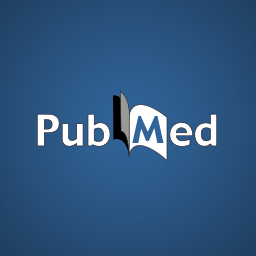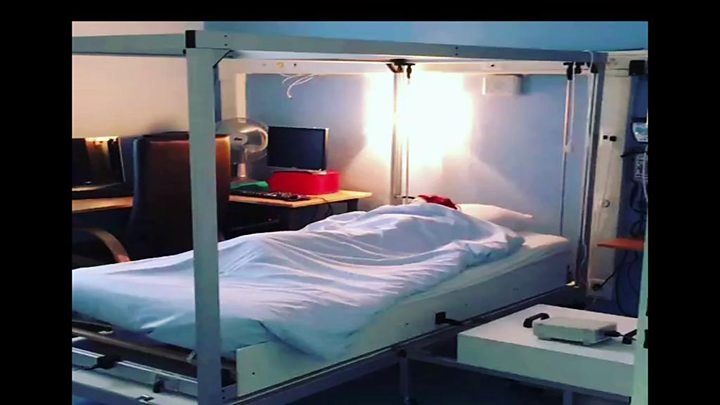Microelements play pivotal roles for fungal/plant development and end-use properties. In this study, we examined the production and characterization of valuable sulfated polysaccharides (SPSs) with biological benefits from Antrodia cinnamomea and fine-tuning of mycelial culture conditions. Using various sulfated salts (e.g. CuSO4, FeSO4 and ZnSO4) to feed A. cinnamomea, we found that CuSO4 and ZnSO4 increased 25% and 20% of mycelium yields, respectively. We further isolated the SPSs from CuSO4, FeSO4 and ZnSO4-feeding of A. cinnamomea (called CuFSPS, FeFSPS and ZnFSPS, respectively) and found that CuSO4 and ZnSO4 significantly promoted SPS production. By contrast, FeSO4 did not change the yields of mycelium and SPS from A. cinnamomea. Characteristic studies have revealed that these sulfated salts did not significantly induce change in the sulfation and the sugar contents of SPS. However, the galactose and glucose contents in ZnFSPS were increased to the value of 249 and 1038 μmol/g, respectively. In addition, in regard to area percentages, while the major SPSs species were low-molecular-weight SPSs (<23 kDa), the sulfated salts increased the area percentages of molecular size in the range of 200-500 kDa. Anticancer function studies showed that those SPSs inhibit the cell viability 35-45% at 800 μg/ml of lung cancer A549 cells via downregulation of EGFR signaling. Our study is the first to identify the efficacy of microelements in the enhancement of mycelia yield and SPS, in which CuSO4 and ZnSO4 enhanced mycelia growth and increased the production of SPS. Our finding suggests that ZnSO4 may play roles in regulating the SPS assembling. Moreover, those SPSs derived from feeding A. cinnamomea with microelements may be useful as a potential agent for inhibition of lung cancer viability.
Health News
Antrodia cinnamomea, a medicinal mushroom, has previously demonstrated anti-inflammatory activity, although the specific compound responsible for the effect remains unclear. The present study was designed to investigate the anti-inflammatory property of antrolone, a novel benzoid derived from A. cinnamomea mycelium, and to clarify the underlying mechanisms of action. To this end, murine macrophage RAW264.7 cells were treated with antrolone (0.1-30[Formula: see text][Formula: see text]M) 30[Formula: see text]min prior to stimulation with lipopolysaccharides (LPS, 0.1[Formula: see text][Formula: see text]g/ml) for 24[Formula: see text]h. Cell viability, nitric oxide (NO) and prostaglandin E2 (PGE2) production, levels of pro-inflammatory cytokines and chemokines, and the signaling pathways involved in the inflammatory cascades were then investigated. Our results show that antrolone significantly decreased LPS-induced NO, PGE2, pro-inflammatory cytokine, and keratinocyte chemoattractant CXCL1 (KC) production and reduced levels of the proteins inducible NO synthase (iNOS) and cyclooxygenase-2 (COX-2). These effects were independent of the effect of antrolone on macrophage cytotoxicity. Moreover, antrolone significantly inhibited the activation of the NF[Formula: see text]B, MAPK, and AKT pathways, while it increased nuclear factor erythroid-2-related factor (Nrf2) and heme oxygenase-1 (HO-1) levels. Our findings suggest that antrolone exhibits potent anti-inflammatory activity and may, therefore, be a lead compound for the development of an anti-inflammatory drug.
A polysaccharide (termed ACPS-1) from mycelia of Antrodia cinnamomea under submerged culture was purified by hot water extraction and successive DEAE-52 cellulose and Sephadex G-100 column chromatography, and structurally characterized by FTIR, NMR, periodate oxidation, Smith degradation, and GC-MS. ACPS-1 (MW 2.296 × 104 Da) was composed primarily of Man, Xyl, Ara, Fuc and Rha with a molar ratio of 31.27:1.77:1.44:1.34:1.00, and its backbone consisted of repeating α-(1 → 3), α-(1 → 6), α-(1 → 2), and α-(1 → 4) glycosidic linkages. ACPS-1 displayed strong in vitro growth-inhibitory effects on several human and mouse cancer cell lines (HeLa, A431, H22 and S180), and were not cytotoxic to normal mouse spleen cells. Studies of the inhibitory mechanism revealed that ACPS-1 induced apoptosis and cell cycle arrest (cells remained in G2/M phase) through blocking of topoisomerase I/tyrosyl-DNA phosphodiesterase I (TOP1/TDP1)-mediated DNA repair pathway. Our findings suggest that ACPS-1 has strong potential applications in pharmaceutical and food industries, and as a novel anticancer agent based on its dual TOP1/TDP1 inhibitory effect.
Antrodia cinnamomea is a polyporaceous medicinal and native fungus in Taiwan. In this study, we found that AC-SPS-F3, a sulfated glucan from A. cinnamomea, reduced lung cancer cell viability via inhibition of EGFR and mTOR activity. The co-administration of AC-SPS-F3 and cisplatin synergistically inhibited lung cancer cell viability. We identified AC-SPS-F3 was a sulfated β-(1→4)-d-glucan with two long 1,6-branches in each repeat unit. The FT-IR absorption at 1341 cm-1 and 887 cm-1 confirmed the existence of sulfates. The proposed repeat unit of AC-SPS-F3, including the types of main skeleton and side chains, as well as the position of the minor galactopyranosyl and mannopyranosyl residues, were proposed according to the 1D and 2D NMR spectra, shown as follows: The features for the proposed repeat unit of AC-SPS-F3 included two long β-(1→6)-Glcp branches, a very high ratio of sulfate substitution, and partial 2-O and 4-O substituents evenly distributed on the β-(1→6)-Glcp branches. The present study is first to characterize the highly branched sulfated polysaccharides and elucidates its anti-cancer functions.
Carbon and nitrogen sources in culture medium of Antrodia cinnamomea were optimized to eliminate the interference of exterior macromolecules on exopolysaccharide (EPS) yield by submerged fermentation. The results suggested that culture medium containing 50 g/L of glucose and 20 g/L of yeast extract as the optimal carbon and nitrogen sources could produce 1.03 g/L of exopolysaccharides. After purification, two heteropolysaccharides (AC-EPS1 and AC-EPS2) were obtained and characterized to provide the basic structure information. As the main component of the produced EPS, AC-EPS2 (accounting for 89.63%) was mainly composed of galactose (87.42%) with Mw (molecular weight) and R.M.S. (root-mean-square) radius of 1.18 × 105 g/mol and 25.3 nm, respectively. Furthermore, the spherical and flexible chain morphologies of EPS were observed in different solvents by TEM. The structural and morphological information of purified EPS were significant for further study on their structure-activity relationship and related applications.
To enhance production of Antrodia cinnamomea triterpenoids (ACTs) from mycelia in solid-state culture, α-terpineol was added to the medium as an elicitor at an optimal concentration of 0.05 mL L-1. Multi-stage solvent extraction and HPLC analysis were performed, and the compositions of ACTs-E (from culture with elicitor) and ACTs-NE (from culture without elicitor) were found to be quite different. In assays of in vitro antitumor activity, ACTs-E, in comparison with ACTs-NE, produced stronger viability reduction in several tumor cell lines and stronger apoptosis induction in HeLa in a dose-dependent manner. Several related proteins involved in the mitochondrial pathway of apoptosis (p53, Bax, caspase-3) did not show expression upregulation by ACTs-E, suggesting that apoptosis induction occurred through a p53-independent process. Further analysis revealed that ACTs-E strongly inhibited synthesis of topoisomerase I (TOP1) and tyrosyl-DNA phosphodiesterase I (TDP1), which are involved in DNA repair, at both transcriptional and protein levels. Our findings suggest that ACTs-E have potential for applications in the pharmaceutical, clinical, and functional food industries, as a novel antitumor agent and a dual TOP1/TDP1 inhibitor.
The functions of 4-acetylantroquinonol B (4-AAQB), a ubiquinone derivative isolated from the mycelium of Antrodia cinnamomea, in immunotherapy for liver cancer were investigated. We found that 4-AAQB could inhibit liver cancer stem cell related manifestations and activate the antitumor ability of dendritic cells. Specifically, 4-AAQB can inhibit EpCAM, AFP and related pathways of HepG2 cells. It also significantly decreases the expression of β-catenin, inhibits the tumorigenicity and decreases the secretion of immune escape related cytokines. Moreover, 4-AAQB can stimulate the proliferation of immune cells and promote the endocytosis of immature dendritic cells. When co-cultured immature dendritic cells with EpCAM+ HepG2 cells, 4-AAQB enhanced the expression of MHC class I and II on the surface of liver cancer stem cells and dendritic cells, increased the expression of costimulatory molecules CD80 of dendritic cells and cytokines related to immune activation. In conclusion, 4-AAQB from Antrodia cinnamomea can enhance immune function of dendritic cells against liver cancer stem cells, and may have the potential to be used for liver cancer prevention and immunotherapy.
We identified increased β-catenin and Atk expression was associated with drug resistance and poor prognosis in breast cancer patients using public databases. Antrocin treatment suppressed breast tumorigenesis and stemness properties.
Peroxisome proliferator-activated receptor α (PPARα) is a nuclear hormone receptor that transcriptionally regulates lipid metabolism and inflammation; therefore, PPARα agonists are promising agents to treat dyslipidemia and metabolic disorders. PPARα full agonists, such as fibrates, are effective anti-hypertriglyceride agents, but their use is limited by adverse side effects. Hence, the aim of this study was to identify small molecules that can activate PPARα while minimizing the adverse effects. Antrodia cinnamomea, a rare medical mushroom, has been used widely in Asian countries for the treatment of various diseases, including liver diseases. Antcin B, H and K (antcins) and ergostatrien-3β-ol (EK100) are bioactive compounds isolated from A. cinnamomea with anti-inflammatory actions. Antcins, ergostane-type triterpenoids, contain the polar head with carboxylate group and the sterol-based body. Here, we showed at the first time that sterol-based compounds, antcins, but not EK100, activate PPARα in a cell-based transactivation study. The in silico docking studies presented several significant molecular interactions of antcins, including Tyr314, and His440 in the ligand-binding domain of PPARα, and these interactions are required for helix 12 (H12) stabilization. We propose that PPARα activation activity of antcins is related to their binding mode which requires conventional H12 stabilization, and that antcins can be developed as safe selective PPARα modulators.
Newspaper headlines this week have advised women that they can take contraceptive pills "every day of the month, without any break" to avoid monthly bleeds and period pain.
Douglas Robertson was 18 when his father, Dougal, a former merchant navy officer, decided it'd be fun for the family to sell his farm, buy a 43ft wooden schooner and sail around the world.
An infection linked to pigeon droppings was a "contributing factor" in the death of a child at a Glasgow hospital, it has been confirmed.
US President Donald Trump was greeted with laughter in September when he told the UN that he had accomplished more than "almost any administration" in his country's history.
When BBC presenter Rajan Datar learned that his father had dementia, it led him to discover that a combination of stigma, language barriers and cultural differences were stopping many in the UK's South Asian community from seeking help. This is his experience.
Does gum disease play a key role in the development of Alzheimer's?
Fear of a vaccine's side effects is the top reason for people refusing them, a report from the Royal Society for Public Health (RSPH) suggests.
We know babies benefit from being rocked to sleep - now a study suggests it helps adults sleep better too.
Scientists say they have discovered the secret behind why some people are skinny while others pile on the pounds easily.
The number of workers trained to prescribe social activities, like exercise groups and art classes, to GP patients who don't need pills, is set to rise, under NHS England plans.
Drug-resistant superbugs are as big a threat as climate change, the health secretary will say as he unveils a new five-year plan to tackle the problem.






